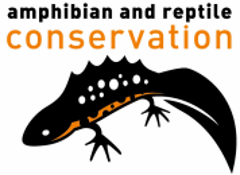- 2016 - Molluscan sample processing, analysis and contribution to status-assessment report - Rùm SSSI (Lochaber) and Den of Airlie SSSI (Angus), Scotland.
- 2015 - Molluscan survey of Rùm SSSI and National Nature Reserve (NNR) - Rùm, Inner Hebrides, Lochaber, Highland Region, Scotland. The island is open to the public (contrary to popular legend), but is visited by few. Our fieldwork in July 2015 sampled four different areas of the island - from dunes to mountain flushes - using litter/vegetation bulk sampling, and 'bugvaccing' (a modified leaf-blower used to suck up small invertebrates fro vegetation).
- 2015 - Site condition monitoring of lemon slug (Malacolimax tenellus) - Den of Airlie SSSI, River Isla, Airlie/Kirriemuir, nr Forfar, Angus, Scotland.
- 2013 - Mollusc survey of four designated sites in Scotland: Alvie SSSI, Cairngorms SSSI, Crathie Wood SSSI, Eastern Cairngorms SSSI, all in the Scottish Highlands. CGO Ecology Ltd is part of a consortium led by Caledonian Conservation, providing consultancy services to Scottish Natural Heritage (SNH), to deliver site condition monitoring (SCM) for a suite of SSSIs in the Cairngorms area with invertebrate interest features. Fieldwork was carried out in summer 2013 to collect substrate samples, followed by laboratory analysis in autumn 2013 (wet sieving, drying, microscopy) to assess the status of the target species. At Crathie Wood SSSI, the target was a population of the rare mountain whorl snail Vertigo alpestris. In the Eastern Cairngorms SSSI, calcareous wet flushes in several glens were targeted to monitor known occurrences, and search for new populations of, Geyer's whorl snail Vertigo geyeri. At Alvie SSSI, the shores of Loch Alvie and Loch Beag were sampled for Lilljeborg's whorl snail Vertigo lilljeborgi. Finally, Glen Feshie and other parts of the Cairngorms SSSI were surveyed to gather a molluscan species list, and prospect for V. geyeri. The target species are all minute air-breathing snails, ranging between 1.5mm to 2mm tall, with very sparse UK distributions. Their cryptic nature and size makes survey and monitoring difficult.















